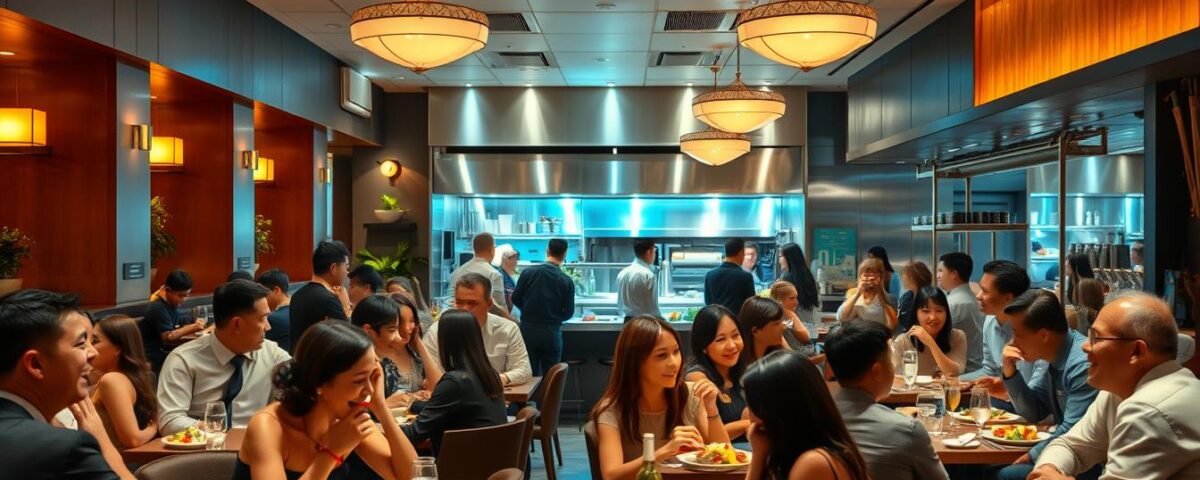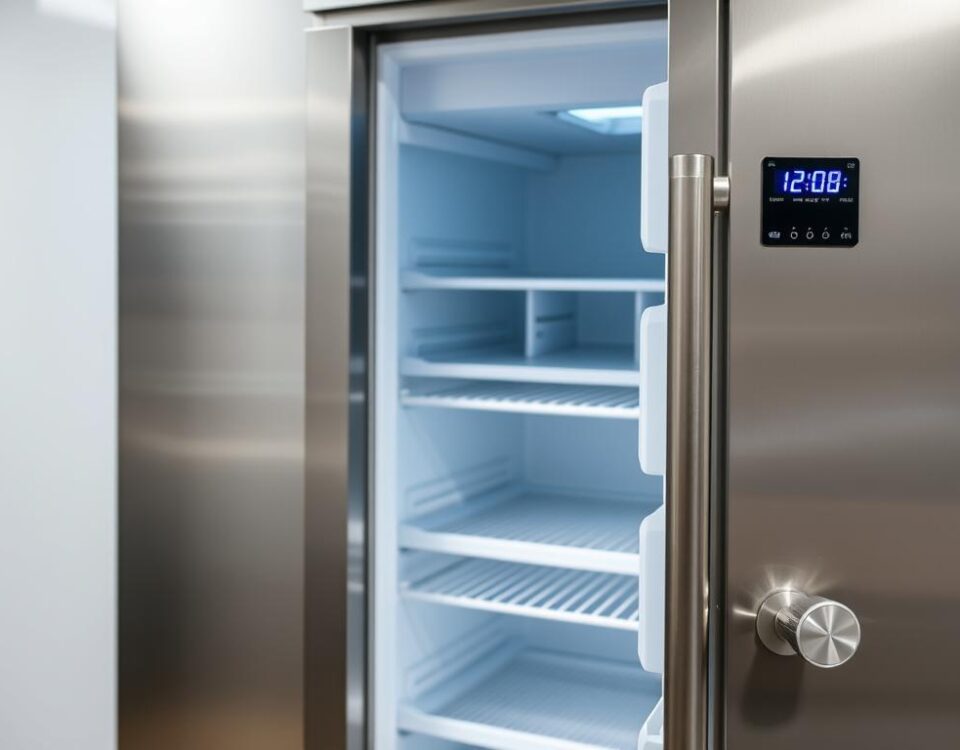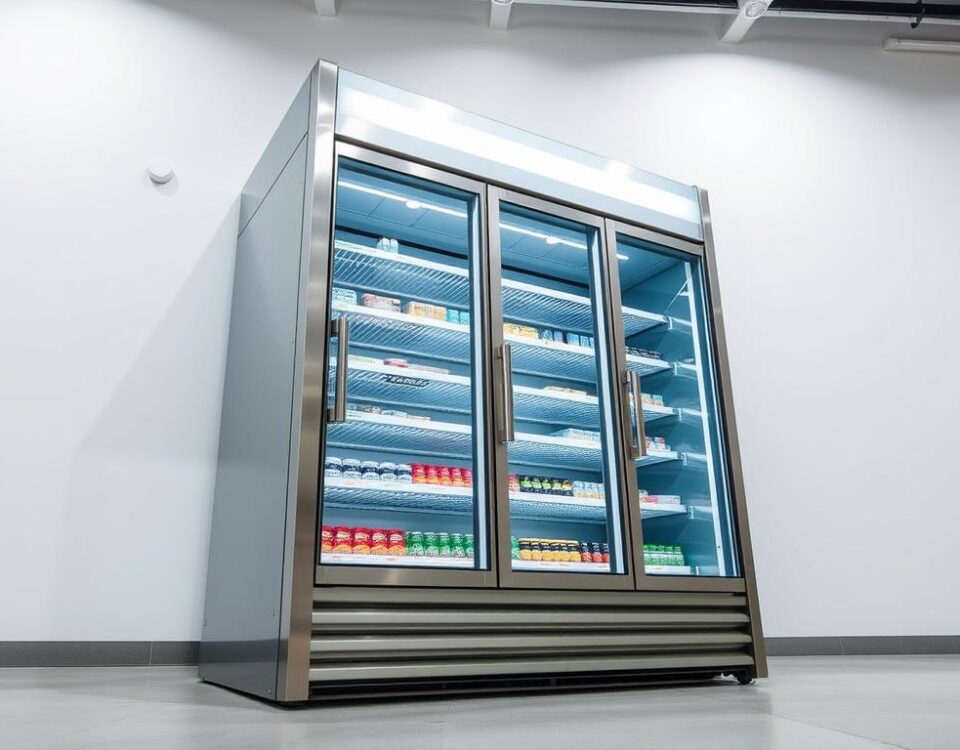
6 Layout Hacks Top Restaurants Use to Maximize Profits
July 5, 2025
How to Turn First-Time Restaurant Guests into Loyal Customers with Psychology
July 6, 2025Imagine walking into a bustling restaurant on a Friday night, the aroma of exquisite cuisine filling the air, and the sound of laughter and chatter creating a vibrant atmosphere. It’s a scene many restaurateurs aspire to replicate, but what sets these successful eateries apart? According to industry research, a staggering 60% of business failures occur within the first year, often due to a lack of clear concepts, inconsistent quality, and poor management.
So, what’s their secret? It’s a delicate balance between the art of serving delicious food and the science of business operations, including top-notch service. In this article, I’ll explore the key factors that contribute to a restaurant’s enduring success.
Key Takeaways
- Understand the importance of a clear concept in attracting and retaining customers.
- Learn how to maintain consistent food quality and exceptional service.
- Discover effective management strategies to streamline operations.
- Explore the role of strategic marketing in driving customer traffic.
- Find out how to create a unique dining experience that keeps customers coming back.
The Secret Ingredients of Thriving Restaurants
To replicate the success of thriving restaurants, it’s essential to understand the fundamental elements that drive their long-term success. Successful restaurants combine quality food with effective business operations, understanding their market niche and maintaining consistency across all aspects of their business.
Understanding the Restaurant Success Formula
The restaurant success formula is built on a foundation of quality, consistency, and strategic management. This formula is not just about serving great food, but also about creating an experience that customers love and want to return to. A key component of this formula is understanding the balance between the artistic and scientific aspects of running a restaurant.
Running a restaurant is both an art and a science. The artistic elements include menu design, atmosphere, and presentation, while the scientific aspects encompass inventory management, staffing, and financial planning. Balancing these elements is crucial for long-term success in the competitive restaurant industry.
Balancing Art and Science in Restaurant Management
Successful restaurant owners understand that thriving in this industry requires both creative vision and analytical thinking. By combining passion for food with sound business principles, restaurants can create a unique experience that attracts and retains customers.
- Maintaining consistency in food quality and customer service
- Implementing effective inventory management and staffing strategies
- Creating a unique atmosphere that reinforces the restaurant’s brand
- Using data-driven insights to inform menu engineering and pricing
| Key Elements | Artistic Aspects | Scientific Aspects |
|---|---|---|
| Menu Design | Creativity in dish presentation | Cost analysis and pricing strategy |
| Atmosphere | Ambiance and décor | Layout optimization for customer flow |
| Operations | Innovative service techniques | Efficient inventory management |
By understanding and balancing these elements, restaurant owners can create a thriving business that stands out in a competitive market. Effective systems and processes ensure consistency while allowing for creativity and innovation in restaurant operations.
Creating a Unique Restaurant Concept That Attracts Crowds
A well-defined restaurant concept is the foundation upon which successful dining establishments are built. To attract and retain customers, your restaurant needs a clear identity that sets it apart in a crowded market.
Defining Your Restaurant’s Mission and Identity
Defining your restaurant’s mission is the first step in creating a unique concept. This mission serves as the guiding principle for all your business decisions, from menu development to customer service. For instance, Lox in a Box, a bagel shop in Sydney, successfully created a brand that combines tradition with contemporary style, resulting in expansion from one location to three. Their clear mission and unique identity helped them attract more customers.
Designing an Atmosphere That Reinforces Your Brand
The atmosphere of your restaurant plays a crucial role in reinforcing your brand’s identity. Every aspect, from interior design to staff uniforms, should reflect your restaurant’s brand and contribute to a cohesive dining experience. By doing so, you create a memorable experience for your customers, encouraging them to return.
Standing Out in a Competitive Market
To stand out, you must identify gaps in the market and opportunities where your restaurant concept can thrive. This involves researching your target audience and understanding their preferences. Successful restaurants differentiate themselves through their brand story, signature dishes, or unique service approaches. By developing a distinctive concept, you can attract a loyal customer base and establish a strong presence in the competitive restaurant landscape.
Delivering Consistent Quality in Food and Service
In the competitive world of restaurants, delivering consistent quality is crucial for building customer loyalty. Consistency establishes trust with customers, and from sourcing to serving, delivering a consistently excellent product increases word-of-mouth exposure and helps turn one-time customers into loyal ones.
Sourcing High-Quality Ingredients
Sourcing high-quality ingredients is the foundation of a successful restaurant. It’s essential to align your ingredients with your restaurant’s concept and price point while maintaining food quality and controlling costs. For instance, a high-end restaurant might source its produce from local organic farms.

Implementing Standard Operating Procedures
Developing standard operating procedures (SOPs) ensures that every dish leaves your kitchen with the same excellent quality, regardless of who’s preparing it. SOPs help maintain consistency in food preparation, presentation, and service.
| Procedure | Description | Benefit |
|---|---|---|
| Food Preparation | Standardized recipes and cooking methods | Consistent taste and quality |
| Service Standards | Trained staff on service protocols | Improved customer satisfaction |
Training Staff for Consistency
Consistency always starts with staff training for your entire team, no matter their role. Training ensures that your service standards remain consistent across different shifts and personnel. Effective training programs include ongoing education and feedback mechanisms.
“The way to get started is to quit talking and begin doing.” – Walt Disney
By focusing on these key areas, restaurants can deliver consistent quality in food and service, ultimately driving customer loyalty and success.
Strategic Location and Market Research
A restaurant’s location can make or break its chances of attracting a loyal customer base. Choosing the right location is crucial for a restaurant’s success, as it dramatically influences traffic and popularity.
Choosing the Right Location for Maximum Visibility
A prime location boosts visibility and increases accessibility, making it easier for customers to find and visit your restaurant. When evaluating potential locations, consider factors such as foot traffic, visibility, and parking availability.
Understanding Your Local Demographics
Understanding local demographics helps tailor your offerings to community preferences and spending habits. Successful restaurants use demographic data to inform everything from menu design to pricing strategy and operating hours.
Adapting to Your Community’s Needs
Adapting your restaurant concept to meet the specific needs and preferences of your local community is vital. By building strong connections with your community, you can establish your restaurant as a neighborhood fixture rather than just another business.
To achieve this, conduct effective market research to understand the demographics, competition, and dining preferences in your target area. Analyze foot traffic, visibility, parking availability, and other location factors that impact restaurant success.
Menu Engineering for Maximum Profitability
Effective menu engineering is the key to unlocking a restaurant’s full profit potential. By analyzing the profitability and popularity of menu items, restaurants can make informed decisions to maximize their revenue without compromising customer satisfaction.
Designing a Menu That Sells
The layout and design of a menu play a crucial role in guiding customers’ choices. By strategically placing high-profit items in prominent positions, restaurants can increase their sales. It’s also essential to use appealing descriptions and images to make these items more attractive.
Pricing Strategies That Protect Your Margins
Pricing is a delicate balance between attracting customers with competitive prices and maintaining healthy profit margins. Understanding pricing psychology can help restaurants set prices that are both appealing to customers and beneficial to their bottom line.
Analyzing Menu Performance and Making Adjustments
Regularly analyzing the performance of menu items is crucial. By categorizing items into stars, workhorses, puzzles, or dogs based on their profitability and popularity, restaurants can decide which items to promote, modify, or remove. This process helps in maintaining a menu that is both appealing to customers and profitable for the restaurant.
To keep the menu fresh and exciting, restaurants can introduce seasonal updates and special promotions. This not only drives sales but also keeps the offerings aligned with customer preferences and seasonal availability of ingredients, thereby controlling costs.
By implementing these menu engineering strategies, restaurants can significantly enhance their profitability while ensuring customer satisfaction.
Effective Restaurant Success Strategies for Marketing and Community Engagement
To keep your restaurant thriving, effective marketing strategies are crucial. In today’s competitive dining landscape, it’s not just about serving great food; it’s about creating an experience that keeps customers coming back. Effective marketing transforms first-time visitors into regular patrons and turns regular patrons into vocal advocates.
Building a Strong Social Media Presence
A robust social media presence is vital for attracting new customers and engaging with existing ones. According to American Express research, 96% of those who typically look to social media for restaurant recommendations are most likely to visit after seeing a restaurant on social media. To build a strong social media presence, focus on showcasing your restaurant’s unique personality, atmosphere, and culinary delights through high-quality visuals and engaging content.
Leveraging Local Partnerships and Events
Partnering with local businesses and hosting events can significantly increase your restaurant’s visibility and establish it as a valued member of the community. Consider collaborating with local breweries, wineries, or suppliers to host events that attract new customers and foster a sense of community. These partnerships can help drive foot traffic and create a loyal customer base.
Creating Loyalty Programs That Work
A well-designed loyalty program can drive repeat business and increase customer retention. To create an effective loyalty program, focus on rewarding customers for their purchases and interactions with your restaurant. This can include offering exclusive discounts, free menu items, or special perks for loyal customers. By leveraging loyalty programs, you can encourage customers to return and become regulars.
By implementing these strategies, you can enhance your restaurant’s marketing efforts and build a loyal customer base. Whether through social media, local partnerships, or loyalty programs, the key is to create engaging experiences that keep customers coming back.
Building and Retaining an All-Star Restaurant Team
Creating a cohesive and efficient restaurant team is essential for providing outstanding service and driving customer loyalty. A restaurant’s staff is its most valuable asset, directly influencing customer satisfaction and retention.
Hiring for Attitude and Training for Skill
When it comes to building a strong team, hiring the right people is crucial. I focus on recruiting staff members who not only have the necessary skills but also align with my restaurant’s values and culture. Training programs are then designed to enhance their technical skills and customer service abilities.
Creating a Positive Workplace Culture
A positive workplace culture is vital for reducing staff turnover and motivating employees to perform at their best. By fostering an environment where staff feel valued and supported, I can ensure that my team is happy and motivated.
| Aspect | Strategy | Benefit |
|---|---|---|
| Hiring | Hire for attitude, train for skill | Better team cohesion |
| Training | Comprehensive training programs | Improved performance |
| Compensation | Fair and performance-based | Higher staff retention |
Offering Growth Opportunities and Fair Compensation
To retain top talent, it’s essential to offer growth opportunities and fair compensation. This includes providing training and development programs that help staff advance in their careers, as well as compensation structures that reward performance.
By focusing on these key areas, I can build and retain an all-star restaurant team that delivers exceptional service and drives customer loyalty, ultimately contributing to the success of my restaurant management efforts.
Leveraging Technology to Streamline Operations
In today’s fast-paced restaurant industry, technology is the key to unlocking operational efficiency. By adopting the right restaurant management software, you can significantly improve your daily operations, enhancing both customer satisfaction and your bottom line.
Implementing an Effective POS System
An advanced POS system is crucial for streamlining transactions and managing sales data. Modern POS systems integrate with reservation and ordering systems, ensuring seamless customer interactions. They also collect and analyze data from every sale, providing valuable insights into customer preferences and behavior.
Using Reservation and Inventory Management Software
Reservation management software helps optimize your seating capacity and reduce no-shows, while inventory management systems control food costs, reduce waste, and ensure you never run out of popular items. By leveraging these systems, you can make informed decisions about menu offerings and inventory.
Embracing Online Ordering and Delivery Platforms
The rise of online ordering and delivery has transformed the restaurant landscape. By embracing third-party delivery platforms or developing your own online ordering system, you can expand your reach and improve customer convenience. However, it’s essential to weigh the pros and cons of each approach to determine the best fit for your restaurant.
By leveraging technology to streamline your operations, you can create a more efficient and customer-friendly restaurant experience. This not only improves customer satisfaction but also enhances your operational efficiency and profitability.
Conclusion: Your Roadmap to a Consistently Full Restaurant
The secret to a thriving restaurant lies in balancing various elements, from concept clarity to customer service. Achieving success in the business requires more than just a passion for food; it’s about creating an exceptional dining experience that keeps customers coming back.
Throughout this article, we’ve explored key strategies for running a successful restaurant. From developing a unique concept and delivering consistent quality to leveraging technology and building a strong team, each element plays a crucial role in creating a bustling restaurant. By understanding your local demographics and adapting to your community’s needs, you can tailor your business to meet the demands of your target market.
To implement these strategies effectively, start by focusing on one or two areas for improvement. Whether you’re looking to refine your menu, enhance your dining experience, or improve staff training, gradual changes can lead to significant long-term success. Remember, running a successful restaurant is a journey, not a destination. It requires ongoing attention to detail and adaptation to changing customers preferences and market conditions.
By applying these principles and maintaining a commitment to excellence, you can create a restaurant that’s not just full today, but consistently busy for years to come, serving great food and providing an unforgettable experience.
FAQ
What are the key elements that contribute to a restaurant’s long-term success?
To achieve long-term success, I believe it’s essential to focus on delivering consistent quality in food and service, creating a unique restaurant concept, and implementing effective marketing and community engagement strategies.
How can I attract and retain customers in a competitive market?
I think building a strong social media presence, leveraging local partnerships and events, and creating loyalty programs that work are crucial steps in attracting and retaining customers.
What role does menu engineering play in maximizing profitability?
By designing a menu that sells, implementing pricing strategies that protect your margins, and analyzing menu performance, you can optimize your menu for maximum profitability.
How can I streamline my restaurant’s operations using technology?
Implementing an effective POS system, using reservation and inventory management software, and embracing online ordering and delivery platforms can help streamline operations and improve efficiency.
What are some effective ways to build and retain an all-star team?
I believe hiring for attitude and training for skill, creating a positive workplace culture, and offering growth opportunities and fair compensation are essential for building and retaining a talented team.
How can I balance art and science in my restaurant management approach?
By combining creative vision with data-driven insights, you can strike a balance between art and science in your restaurant management approach, driving revenue growth and improving customer satisfaction.



